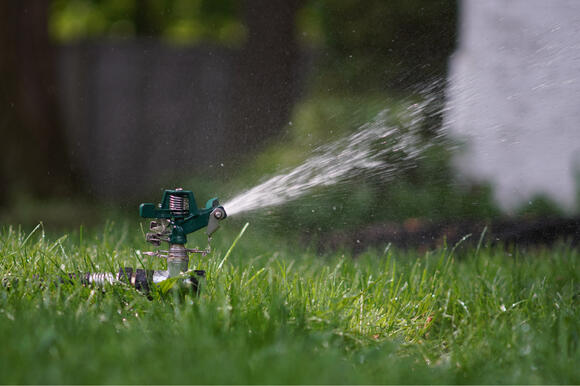The warmest June in 50 years combined with low rain totals and no relief in sight could mean a dry summer for Chicago

It's been great weather for hitting the swimming pools and beaches, but this summer's dry and sunny conditions could mean trouble for Illinois crops and landscaping.
Illinois is not the only state suffering from dry conditions. For the week ending June 8th, 31 US states are experiencing drought conditions rated from "moderate" to "exceptional" according to the National Oceanic and Atmospheric Administration (NOAA) drought monitor.
The western US is particularly impacted, with many parts of California in extreme and exceptional drought.
Southern Illinois is not currently rated as dry. But, according to NOAA, the northern part of the state is abnormally dry, in a moderate drought, or a severe drought, depending on your location.
And, there appears to be no immediate relief in sight. NOAA predicts, "Lack of a rainfall signal from monthly and seasonal precipitation outlooks supports drought persistence across the Midwest."

How is the drought affecting Chicagoland plants?
With dry conditions and hot weather, residents' landscaping and gardens can suffer.
Illinois State climatologist Dr. Trent Ford told ABC7 Chicago, "Because of the heat over the past couple of weeks, we're starting to see vegetation impacts: trees, lawns, shrubs are starting to show water and moisture stress."
Ford continued, "If we continue to have dryness - even not the same magnitude that we saw in the spring, but continued below average precipitation through the summer - as demand for water increases, we'll continue to see worsening impacts, including perhaps water restrictions and burn bans and things like that."
Watering tips for your yard and garden
Julie Janoski, manager of the Plant Clinic at the Morton Arboretum in Lisle told the Chicago Tribune homeowners will need to water regularly for their plants to survive the stress of the drought. “The most vulnerable plants are trees, shrubs, and perennials that you just planted this spring or in the last year or two. They haven’t fully developed their root systems, so even in a normal year, they would need extra watering. And this is not a normal year.”
The Morton Arboretum website has some tips for watering plants during drought conditions. They remind homeowners not to neglect trees during a drought, even established ones, "Drought stress can increase a tree’s susceptibility to certain diseases and insects."
Trees and shrubs
Don't water the leaves, but make sure water gets to the root system. For trees, water within the drip line of the tree (the trunk to the end of the branches). Water deeply at wide intervals rather than lightly watering more frequently.
Don't heavily prune your trees and shrubs. This stimulates growth, which requires more water.
You can run a garden hose slowly at the drip line of your trees and move it occasionally, or use watering bags.
If you water trees with a sprinkler, use a rain collector to be sure you have watered one to two inches. And don't neglect the trees in the parkway. They will need water during dry spells too.
For more tips on watering trees and shrubs, see the Morton Arboretum's guide to watering trees and shrubs.
Plants
The Arboretum states that plants have different abilities to tolerate droughts. Water your newest plants, trees, and shrubs first. Water your plants in the early morning before the sun can cause water to evaporate. And don't fertilize during dry spells. The salts from the fertilizer can injury plant roots when the soil is dry.
Lawns
If you need to prioritize your watering due to high water bills or local water regulations, be sure to water trees, shrubs, and plants first. Your lawn will turn brown and go dormant, but most lawn grasses can survive droughts and will rebound when conditions are better. But, your other plants may not do the same.
How to know how much water to use
Janoski said that gardeners need to dig down a few inches in the soil. If your soil is moist, you've watered enough. You can also spread mulch around plants to help keep them cool and roots to stay moist.
Use rain barrels to collect rainwater and help reduce your water bill. Even in a short rainstorm, you can collect quite a bit of water from roof runoff.
And remember to pay attention to your town or city's local water ordinances. Most places in Illinois have some form of watering restrictions, and most likely they will be enforcing them during these dry conditions.

